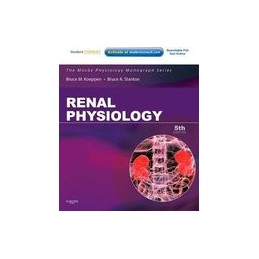- Obniżka


 Dostawa
Dostawa
Wybierz Paczkomat Inpost, Orlen Paczkę, DHL, DPD, Pocztę, email (dla ebooków). Kliknij po więcej
 Płatność
Płatność
Zapłać szybkim przelewem, kartą płatniczą lub za pobraniem. Kliknij po więcej szczegółów
 Zwroty
Zwroty
Jeżeli jesteś konsumentem możesz zwrócić towar w ciągu 14 dni*. Kliknij po więcej szczegółów
Renal Physiology helps you to quickly and easily grasp the fundamentals of renal physiology and learn how to apply them in a clinical context. Thoroughly updated, this medical textbook in the Mosby Physiology Monograph Series provides a basic understanding of normal kidney function at the cellular and molecular level. Attractively illustrated with clear 2-color diagrams, it also facilitates study with learning objectives, In the Clinic and At the Molecular Level boxes, chapter summaries, and clinical cases with review questions and explained answers. Online access at www.StudentConsult.com makes this an even more accessible powerful learning resource.
Opis
